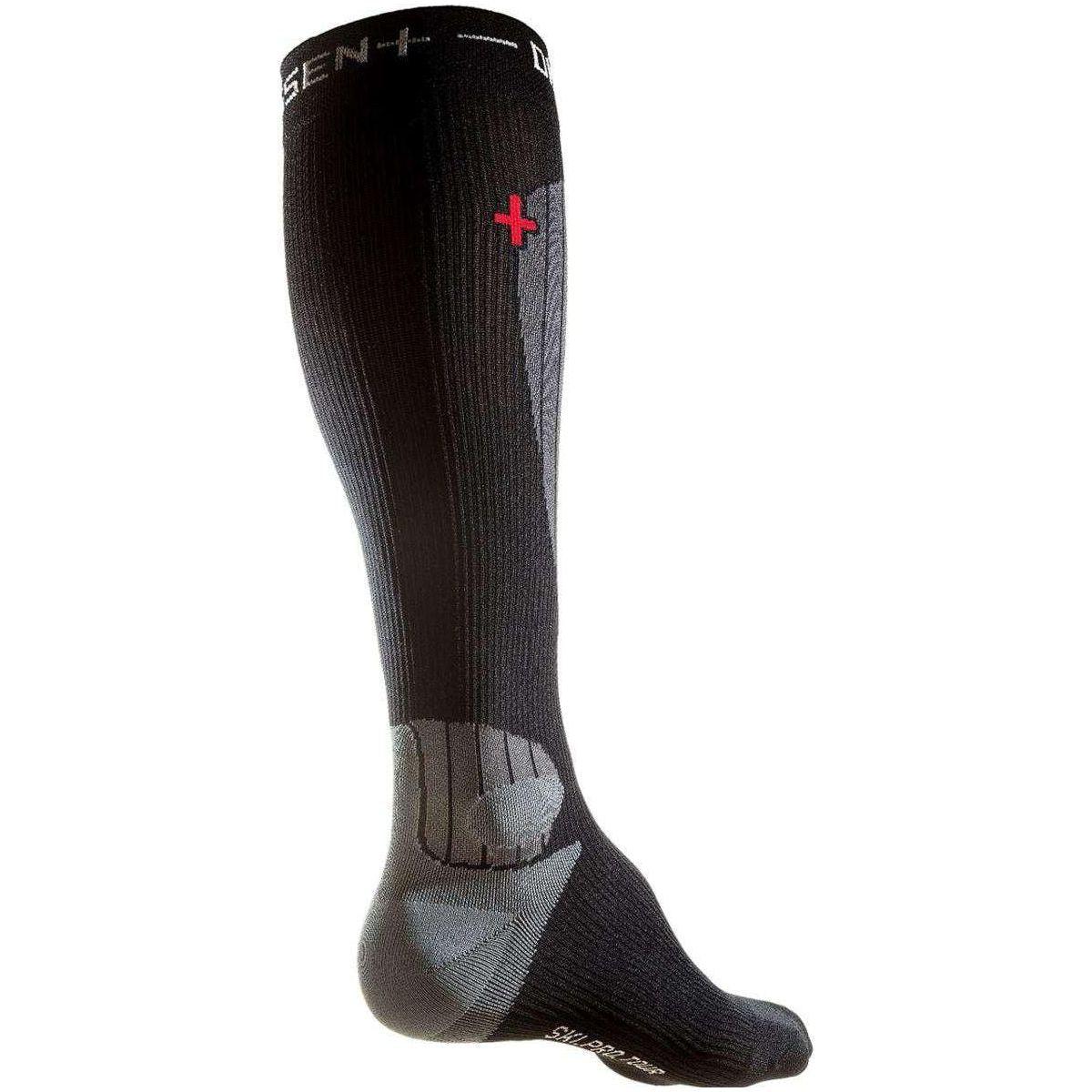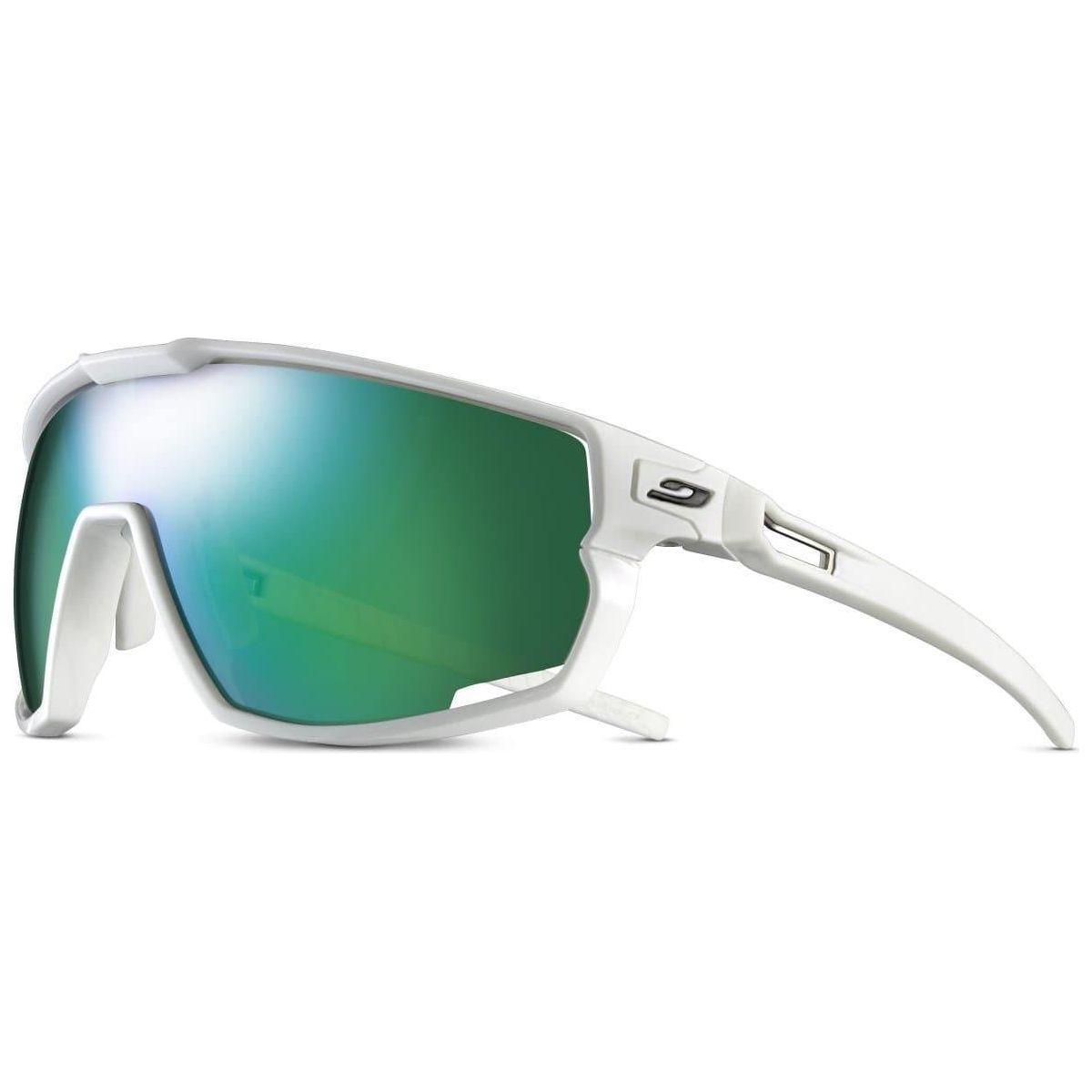Last Fall, Cripple Creek Ambassador Aidan Goldie set out to ski the second most prominent peak in the world. Here are a few takeaways from his epic adventure...
There is something intrinsically exciting about traveling to a foreign country, climbing and descending the big mountains of the world, and absorbing new cultures along the way. However, this can prove to be very cost prohibitive as a trip to the the Himalaya, Andes, Urals, or Alps often requires a small fortune to organize. There is an attractive alternative, however and it lies just south of our border. The third highest peak in North America, the ultra-prominent stratovolcano Citlaltepetl- also known as Pico de Orizaba- can be accessed via a short flight and a few hours in a cramped rental car.

View of Pico de Orizaba from 14,000 ft. Snowline has receded significantly in the last 30 years, and continues to get pushed higher and higher.
We organized a trip over Thanksgiving with some friends from college. Trying to cut costs where we could, my total expenses ended up totalling less than 800 USD! What we found was a mountain that appears benign from a distance, but a mountain that deserves respect just like the other grand peaks of the world- all for a fraction of the price. Going with the expectations of skiing from the summit, we found obstacles and circumstances that prevented us from doing so. We learned that it is rare to find conditions perfect for corn skiing at 18k ft , and those conditions are also hard to forecast.
Before the trip I was warned to be prepared for the worst headache of my life. Climbing Orizaba at ~18.5 k feet would represent the highest elevation that I had ever climbed to. Working hard at that elevation takes a toll on your body and spending a couple of days over 14,000 feet at a Refugio at the base of the climb does not do much to help with acclumization. Coming from Colorado, where the highest peak tops off at 14.5 k feet, this is certainly was a new experience.
Day 1: Denver to Tlachichuca
Our day started with a direct flight from Denver to Mexico City. While we were eager to fly into Mexico’s Capital, little did we know that this evening would be the crux of the trip. Mexico City is absolute madness, and renting a car is a process and a half. Our mistake was renting a car in through a third party like carrentals.com. If you rent a car, make sure to call the local rental company directly to ensure your reservation will be honored and to avoid being taken advantage of (they wanted us to buy crazy overpriced insurance for the vehicle through them). In fact, we would recommend not even renting a car, but instead hiring someone to drive you to Tlachichuca. The Servimont Hostel provides this service and you would actually save money and hassle compared to the process of renting a vehicle. After finally renting a car and squeezing three pairs of skis in the smallest sedan that Chevy makes, we were on our way to making the 3.5 hour drive to our hostel and meet the second half of our group that arrived a few hours before us.
Upon landing in Mexico, we got a text from the second half of our group that they got pulled over immediately after leaving the car rental place, and were subsequently extorted by a corrupt police officer. They had to pay a 100 dollar bribe before being having their driver's license returned and being let go. With this information we were very weary of the hordes of armed police officers that litter the streets of Mexico City. They always have their lights on, large shotguns in hand, and will intimidatingly flash lights into your car looking for tourists to pull over.
Something has to be mentioned about the quality of the drive to Tlachichuca. Everyone in Mexico is an aggressive driver. Be prepared to be cut off, tailgated, and honked at. Expect to encounter dozens of speed bumps on the drive that are poorly marked and nearly impossible to see at night. One will be driving legally at 80 km/hr and slam on the brakes to avoid going airborne. We noticed a fair number of scratched bumpers in mexico presumably from these speed bumps. After an ordeal of a travel day, we finally we arrived at 3 am to the Servimont hostel and were warmly greeted my Sr. Reyes. I can't speak highly enough about Servimont and the level of helpfulness that they offer.

Servimont is a great resource to buy fuel for your stoves that you cannot carry with you on plane.
Day 2: Leisurely Day to 14,000 ft
After the ordeal we experienced getting out of Mexico City, a home cooked meal was more than welcomed. Servimont served us a delicious breakfast with fresh fruit and some incredible orange juice freshly pressed from the trees out back. After breakfast we had enough time to pack and sort gear one last time before heading up to the Refugio at the base of Orizaba. We bought water and white gas from Sr. Reyes and were on our way. The drive to the Refugio is long (around 2.5 hours), dusty, and bumpy. We hired a ride from the kind people at Servimont and enjoyed a beautiful drive through old growth ponderosa pine forest with a rich lupine understory.
As the drive went on Orizaba grew larger and larger as it became really apparent how large this mountain actually is. The scale is quite impressive. Orizaba has the second highest prominence of any mountain in the world, only behind Kilimanjaro. Prior to making the drive up the Refugio, Sr. Reyes gave us a warning about thievery at the hut. It's not uncommon for people from Veracruz to come up to steal from climbers, and snatch objects out of the bunks. The Refugio can sleep 42-60 people, with that much traffic one can see how items can go missing. We enter the hut as someone realizes that their sleeping bag has been stolen as they are packing up to leave. With this in mind, we take two shifts exploring the area around the hut.

Elliott getting a first glimpse of the mountain, and its incredible prominence
That evening I got a good opportunity to talk to some of the locals that work for different guiding services. I talked in length a gentleman named Ricardo who works for the guiding company solely as a lookout for thievery. He spends his whole day in the hut watching his clients belongings. Being a Spanish speaker myself, we exchange jokes and after helping him carry some gear into the hut I asked if he'd be willing to watch over our stuff as well. He says that he would be happy to, and I gave him 100 pesos in appreciation. We headed to bed early to get ready for a big day in morning. The most important piece of gear to bring to the hut is a pair of earplugs, though be warned that they may not work in the symphony of snoring within the confines of the small stone hut.
Day 3: Acclimating and Scouting in the Daylight
The plan was to hike high with heavy packs to acclimate, and then stash some gear including our skis and boots at the base of the glacier. As the heaviest items in our pack we figured it would be nice to carry a lighter load first thing in the dark morning. This was also an opportunity to check out snow conditions. Due to low precipitation we had heard reports of this season having some of the worst snow conditions that Orizaba had ever seen. On our recon missions, we confirmed that the conditions were not great as the glacier was simply a thick and dense sheet of ice. These conditions led us to the decision to leave our shovels, probes, skins, and ski crampons at the hut and make the climb without the added weight. Upon arriving at the base of the ‘labyrinth’, we stashed our gear and turned on a single avalanche beacon to make it easier to locate our gear in the dark. We all returned to the Refugio and got ourselves ready for an alpine start in the morning.

Using our acclimatization day to stash our skis at the base of the glacier made our summit day a little easier.
The Refugio has four propane burners that get mainly used by the guiding companies to cook food for their clients. I would suggest bringing your own personal stove to avoid waiting to eat in the Refugio. On this night the capacity of the hut became very apparent. A guide for a large group showed up and scrambled to find bed space for his clients. He ended up setting tents up outside for them. After the guiding companies finished cooking food for their clients, they offered our group some leftovers: fettuccine alfredo. I'm not one to eat too much dairy for digestive reasons, but free food is free food and that is perhaps my one biggest weaknesses. I would have some regrets about that meal on summit day.
Day 4: Summit Day
Our alarms woke us up at 2am, I ate a couple of cliff bars for breakfast, and we quickly got our packs on and started our hike in darkness. Bringing a 750 lumen headlamp made navigation and route finding in the ‘labyrinth’ manageable. Upon exiting the labyrinth, and entering the base of the glacier, we were greeted with an incredible sunrise. The colors were spectacular and stoke reached a new high for the day. Looking at the route in the first light we could see a group of Germans walking up the west side of the glacier. We looked at the east side of the glacier and the first rays that were hitting the snowfield. Our team started talking and decided that we may be getting our best skiing on this east side since it will be getting the most sun. We begin ascending from this side and continued to make our way up the mountain. We quickly realized that although the sunlight was bright, it would not be enough to soften the bulletproof ice.
When we made it to 17,000 ft the surface we encountered was hard and the angle steep. As we traversed to a slightly easier slope, we realized that skiing on bulletproof ice from that point will prove dangerous with terrain traps below us. We decided to ditch our skis so we put an ice screw in and attached our skis to them. About a hundred feet or so above that point the snow began to soften a touch- definitely still ice, but with a little more crunch to it. We decided to backtrack and grab our skis again to carry up the mountain.

Max and the rest of the crew booting up the glacier. We were met by hard ice, and a texture that made it challenging to ski on.
The summit was in sight, and our energy levels were still high. At 18,000 feet without headaches, the summit is so close. We climbed closer and closer to the summit, but as we got closer we witnessed an accident from a separate party of two skiers ahead of us on the summit. I saw a dark object rolling down the side of the mountain, gaining more momentum, and eventually disappearing down below as it rolled over a col, and into a long couloir of rock bands and ice. Only a few feet from the summit- Tom, Nora, and I made the decision to turn around to help with the inevitable rescue of the fallen skier. After the grim fate of the skier is discovered, we hiked back down to the hut. After regrouping as a team of 6, we packed up our belongings and g0t ready to drive back down to Tlachichuca.
Final Thoughts:
We didn’t ski from the summit of Orizaba. The conditions were not there. You can get to the top with the intentions of skiing, but as with any other big objective, one needs to make a conscious effort to avoid the heuristic trap that a lofty goal like this offers. We took our skis across borders, on long car rides in small sedans, and then up to 18k feet. We did this for a slim possibility of a ski descent, decided against it, and reversed the journey back to Colorado. It is possible to take a weekend, a week, or a month to travel to the third highest peak in North America, but make sure to adjust your goals to align with the conditions that the mountain will give you.





